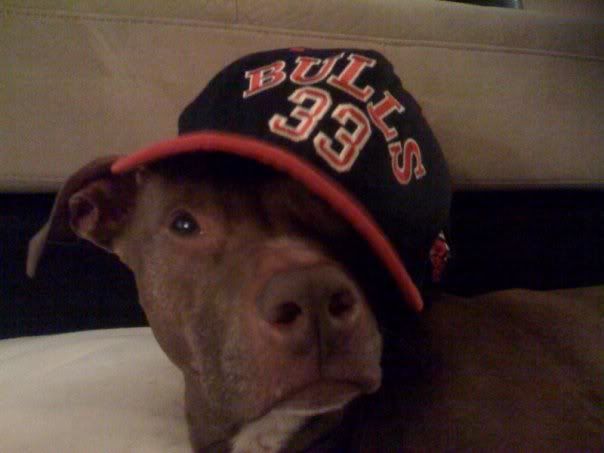I am in the Athletic Training Education Program at one of the top colleges in the country for such things. (Not to brag, just establishing credibility
 ) So I thought I could provide some insight and answer any questions you guys might have.
) So I thought I could provide some insight and answer any questions you guys might have.First, I'll start with some anatomy. The Anterior Cruciate Ligament is one of four ligaments in the knee (MCL, LCL, PCL). It is located at the front of the knee and connects the femur (thigh bone) to the tibia (lower leg bone). It's main function is to prevent anterior displacement of the tibia (meaning without it, the lower leg will literally slide forward like an opening drawer). If you watch the video of the injury closely, you can actually see this in action. The doctors are able to slide Derrick's lower leg back and forth. This is called a Lachman's Test (aka Anterior Drawer Test). This is likely how that Miami news source was able to report the ACL injury before the MRI ever took place.
ACL tears are usually caused by a rotational force while the foot is firmly planted to the ground. This is exactly what happened in Derrick's case. It is in most cases a non-contact injury and is actually much more common than you'd expect in Basketball. It is actually a defense mechanism by the body. The ligaments are strong enough to support the body, but just weak enough that they can tear under extreme circumstances to preserve the integrity of the rest of the joint.
What Derrick suffered was a Grade 3 tear, meaning the ACL is completely torn and non-functional. On the positive side, there is very little persistent pain after about 20 minutes or so, and one can usually go back to routine daily activities about a day or 2 after the injury. On the downside, the ligament is no longer able to heal itself and surgery is required.
New medicine and technology has greatly increased the success rate of ACL treatment. In fact, we can see recovery times as short as 5 months in some cases. We usually try to get the athlete to about 80% of their athletic ability BEFORE the actual surgery takes place using stair climbers and eliptical machines. Most athletes are even able to run in a straight line. I'm not sure if this is how they'll handle Derrick's injury, as they will most likely want to stretch his career as opposed to getting him on the court as soon as possible (Which sucks in the short term as a fan, but long-term is the best thing for Derrick). We are most likely looking at an 8-9 month recovery/rehab time, and even longer after that to get into playing shape and adjust to the NBA game again.
I have seen some of you questioning whether we will ever see the same Derrick again. I have some good news: ACL tears are nowhere near the death sentence they were even 10 years ago. Technology now allows us to reconstruct the knee to be just as strong as it was before the injury. The real hurdle will be Derrick's mind. Think about it: he has spent all of his 23 years with the exact same knee. Now he has one that feels slightly different, but it is enough to make him question it. The hardest part for the athlete is trusting that the knee is strong enough to do what his old one did. It may be years before this happens, or it may not happen at all. Every athlete reacts differently. But keep this in mind: he is one of the hardest working kids in the league and will adjust his game if needed. While we might not see the unicorn we all know and love, he is still more than talented enough to remain a top 5 player in this league.
That's all I have for you guys for now. If you have any questions relating to sports medicine, please don't hesitate to ask. I would love to help you guys out. Look forward to being a part of this great community!


















 great post!
great post!








